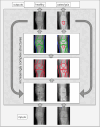Applications of machine learning and deep learning in musculoskeletal medicine: a narrative review
- PMID: 40375335
- PMCID: PMC12080048
- DOI: 10.1186/s40001-025-02511-9
Applications of machine learning and deep learning in musculoskeletal medicine: a narrative review
Abstract
Artificial intelligence (AI), with its technologies such as machine perception, robotics, natural language processing, expert systems, and machine learning (ML) with its subset deep learning, have transformed patient care and administration in all fields of modern medicine. For many clinicians, however, the nature, scope, and resulting possibilities of ML and deep learning might not yet be fully clear. This narrative review provides an overview of the application of ML and deep learning in musculoskeletal medicine. It first introduces the concept of AI and machine learning and its associated fields. Different machine concepts such as supervised, unsupervised and reinforcement learning will then be presented with current applications and clinical perspective. Finally deep learning applications will be discussed. With significant improvements over the last decade, ML and its subset deep learning today offer potent tools for numerous applications to implement in clinical practice. While initial setup costs are high, these investments can reduce workload and cost globally. At the same time, many challenges remain, such as standardisation in data labelling and often insufficient validity of the obtained results. In addition, legal aspects still will have to be clarified. Until good analyses and predictions are obtained by an ML tool, patience in training and suitable data sets are required. Awareness of the strengths of ML and the limitations that lie within it will help put this technique to good use.
Keywords: Artificial intelligence; Machine learning; Orthopaedics; Reinforcement learning; Supervised learning; Traumatology; Unsupervised learning.
© 2025. The Author(s).
Conflict of interest statement
Declarations. Ethics approval and consent to participate: Not applicable. Competing interests: The authors declare no competing interests.
Figures





References
-
- Krizhevsky A, Sutskever I, Hinton GE. 2012. ImageNet classification with deep convolutional neural networks. In: (Eds) Advances in Neural Information Processing Systems 25 (NIPS 2012).
-
- Alzubaidi L, Al-Dulaimi K, Salhi A, Alammar Z, Fadhel MA, Albahri AS, Alamoodi AH, Albahri OS, Hasan AF, Bai J, Gilliland L, Peng J, Branni M, Shuker T, Cutbush K, Santamaria J, Moreira C, Ouyang C, Duan Y, Manoufali M, Jomaa M, Gupta A, Abbosh A, Gu Y. Comprehensive review of deep learning in orthopaedics: applications, challenges, trustworthiness, and fusion. Artif Intell Med. 2024;155: 102935. - PubMed
Publication types
MeSH terms
LinkOut - more resources
Full Text Sources

